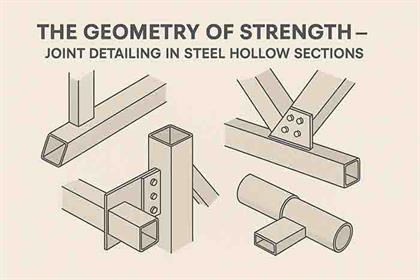
Introduction
Glass Fibre Reinforced Concrete (GFRC) has become a popular choice for facade cladding in modern architecture. Its lightweight nature, durability, and design flexibility make it an ideal material for creating visually striking buildings. Architects and designers increasingly prefer GFRC for its ability to combine aesthetics with performance.
What is GFRC?
GFRC is a composite material made of cement, fine aggregates, water, polymers, and glass fibers. Unlike traditional concrete, which relies on steel reinforcement, GFRC uses glass fibers to enhance strength and flexibility. This composition allows for thinner, lighter panels that retain durability without compromising on structural integrity.
Also Read : Glass Fibre Reinforced Concrete - GFRC - Benefits and Uses
Benefits of GFRC in Facade Cladding
1. Lightweight and Easy Installation
- GFRC panels are significantly lighter than traditional concrete, reducing the structural load on buildings.
- Their lightweight nature simplifies transportation and installation, cutting down labor and material costs.
- This makes GFRC ideal for high-rise buildings where weight considerations are crucial.
2. Design Flexibility
- GFRC can be molded into complex shapes, allowing architects to create intricate facade designs.
- It supports a wide range of finishes, from smooth surfaces to textured and decorative patterns.
- This versatility makes it a preferred choice for both modern and classical architectural styles.
3. Durability and Weather Resistance
- GFRC is highly resistant to weathering, moisture, and temperature fluctuations.
- Unlike traditional concrete, it does not suffer from spalling or cracking due to freeze-thaw cycles.
- It also provides excellent fire resistance, adding an extra layer of safety to buildings.
4. Sustainability and Environmental Benefits
- GFRC uses fewer raw materials compared to traditional concrete, reducing its environmental impact.
- It has a lower carbon footprint due to reduced cement usage and the incorporation of recycled materials.
- Many architects opt for GFRC to meet green building certifications like LEED.
Also Read : Green Concrete - An Eco Friendly Concrete Substitute
Real-World Applications of GFRC in Facades
Many landmark buildings worldwide feature GFRC in their facade designs. For example:
- The Broad Museum in Los Angeles utilizes GFRC panels for its unique honeycomb structure.
- Zaha Hadid’s Heydar Aliyev Center incorporates curved GFRC elements to achieve its flowing, futuristic design.
- Dubai Opera House showcases GFRC’s versatility with intricate paneling and geometric aesthetics.
Cost Considerations
While GFRC may have a higher initial cost than traditional concrete, its long-term benefits outweigh the expense:
- Lower Maintenance Costs: GFRC’s resistance to moisture and weathering reduces repair and upkeep costs.
- Reduced Structural Costs: Its lightweight nature minimizes the need for heavy support structures, cutting down material expenses.
- Longevity and Value: GFRC’s durability ensures a longer lifespan, making it a cost-effective solution in the long run.
Final Thoughts
GFRC has revolutionized facade cladding, offering architects and designers a material that blends strength, aesthetics, and sustainability. Its lightweight nature, design flexibility, and durability make it an excellent choice for modern construction projects. As more builders and developers recognize its advantages, GFRC continues to shape the future of architectural design.
















